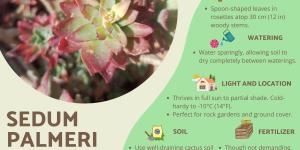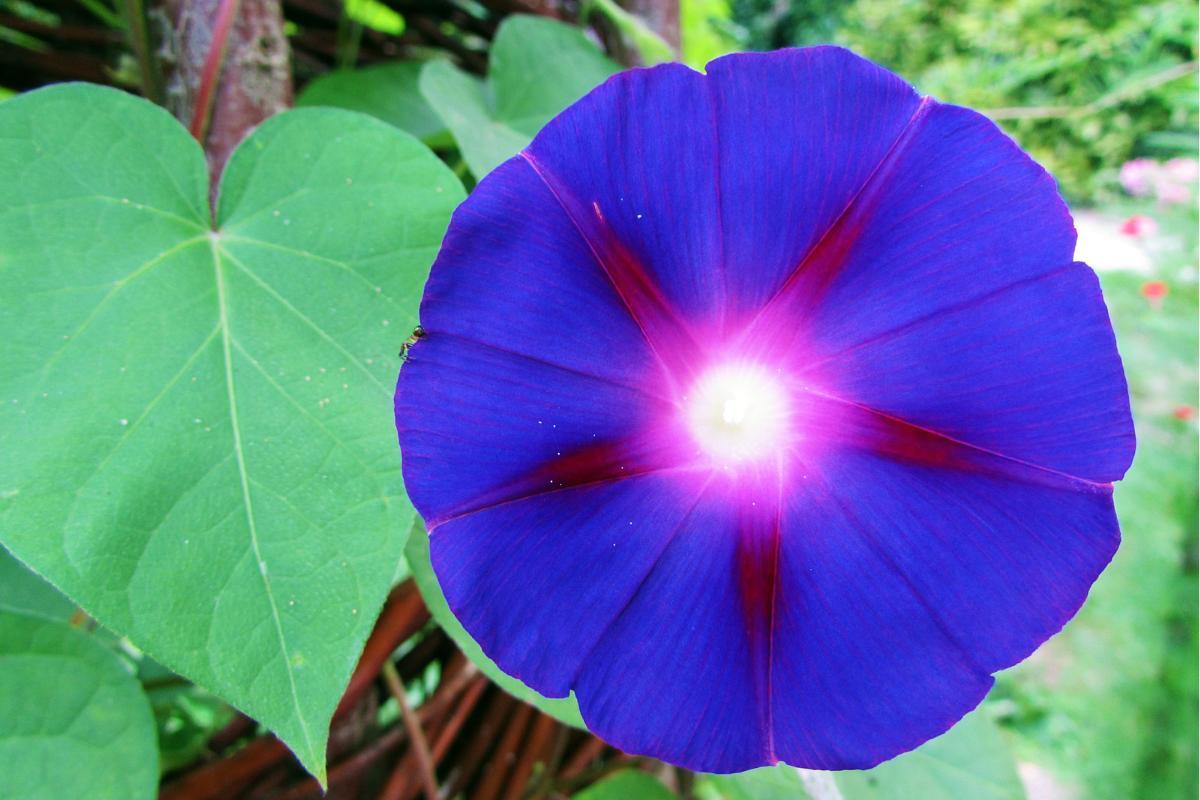Morning Glory or Ipomoea Purpurea Care Guide


Morning glory (Ipomoea purpurea) is a prolific plant often found in open fields and along roadsides, where it can quickly cover landscapes with its vibrant blooms. While it is considered invasive in some regions and even banned in certain areas due to its rapid spread, it can make a beautiful addition to your garden.
In the following article from TheDailyECO, you’ll find a comprehensive Morning glory (Ipomoea purpurea) care guide designed to help your plant flourish.
- Characteristics of Ipomoea purpurea
- Optimal light, temperature, and placement for Ipomoea purpurea
- Recommended substrate and fertilizer for Ipomoea purpurea
- Watering guidelines for Ipomoea purpurea
- Pruning techniques for Ipomoea purpurea
- Reproduction of Ipomoea purpurea
- Common diseases and pests affecting Ipomoea purpurea
- Why is my Ipomoea purpurea not flowering?
Characteristics of Ipomoea purpurea
Ipomoea purpurea, commonly known as the morning glory, is a versatile plant with several alternative names, such as purple morning glory and common morning glory. Here are some of its most distinctive characteristics:
- It's a climbing vine that can reach heights of 1.8-3 meters (6-10 feet). It can climb walls, grow along the ground, and entangle itself in trees or other plants. It can also cover vertical surfaces such as walls and trellises.
- Flowers come in a variety of colors, including purple, pink, red, white, and even tricolor combinations. It blooms profusely from summer to autumn, displaying vibrant flowers that typically range from violet to blue with a white center.
- Leaves are heart-shaped and alternate along the stem.
- Morning Glory blooms continuously from late spring to early fall, producing new flowers daily.
- It's a fast-growing plant that can quickly cover fences, trellises, or other structures. When used in gardens, it requires ample space, as it tends to spread extensively. However, in agricultural settings, this aggressive growth can be problematic, as it may overtake and damage crops.
- Morning Glory seeds contain ergotamine, a toxic compound that can cause hallucinations and other adverse effects if ingested.
- Native to South America and Central America, this plant has been introduced to various climates and environments around the world and adapts well to them.
- In addition to its ornamental value, Ipomoea purpurea has medicinal uses. It is known for its laxative, analgesic properties, and has been used as an adjunct in the treatment of syphilis. Historically, in pre-Hispanic Mexico, it was utilized in rituals for its hallucinogenic effects.
Curious about other plants with striking heart-shaped leaves? We've got the perfect guide for you.

Optimal light, temperature, and placement for Ipomoea purpurea
Ipomoea purpurea, or morning glory, thrives best in environments with plenty of sunlight, making it ideal for outdoor planting in open fields. However, while it needs ample light, it does not tolerate intense, direct sunlight very well, as this can cause its leaves to burn.
Despite this, when grown independently in open fields, the plant often flourishes vigorously. In garden settings where the sun is particularly strong, providing partial shade during the hottest part of the day can help protect the plant and maintain its health.
This plant is also well-suited to warm climates and handles heat efficiently. It prefers a humid and warm environment with temperatures ranging between 20 and 30°C (68-86°F). However, it does not fare well in cold conditions, so it is best to protect it from low temperatures to ensure optimal growth.

Recommended substrate and fertilizer for Ipomoea purpurea
Ipomoea purpurea is quite adaptable when it comes to soil conditions, and it does not require any special treatment for the substrate. This resilient plant can thrive in a variety of soil types, making precise pH or soil requirements less critical.
For optimal growth, you can prepare the soil by mixing in peat, which helps retain moisture, with porous materials like perlite, vermiculite, clay, or volcanic gravel to enhance drainage. Adding a small amount of compost or worm humus can further enrich the soil, providing essential nutrients for the plant.
When fertilizing, well-processed compost, worm humus, or a diluted light manure solution can be effective. Adding these before planting ensures the soil is nutrient-rich and ready to support healthy growth.

Watering guidelines for Ipomoea purpurea
Ipomoea purpurea requires frequent watering during hot weather, often up to twice a day, as water tends to evaporate quickly.
It's best to water early in the morning and again in the late afternoon to ensure the plant receives adequate moisture. Avoid watering during the peak midday hours when the sun is at its hottest, as this can lead to rapid evaporation and potential stress on the plant. In cooler seasons, the watering frequency can be reduced to every three days, as the plant's water needs decrease.
If you’re passionate about plant care, you’ll love learning how plants breathe and thrive. Check out this fascinating topic.
Pruning techniques for Ipomoea purpurea
Ipomoea purpurea can be pruned at the end of winter or the beginning of spring to promote vigorous flowering in the upcoming season.
During this period, remove all dead or dried leaves and any branches that extend beyond the desired shape of the plant, whether they are soft or slightly woody. Pruning helps to maintain the plant’s health and encourages a more robust and attractive bloom.
Reproduction of Ipomoea purpurea
If you’re considering how to propagate Ipomoea purpurea, you have two main methods:
Reproducing by seeds
- Start by soaking the seeds in a container of water overnight. This helps to soften the seed coat and improve germination rates.
- The next morning, drain the seeds and plant them in a small pot filled with a well-draining soil mix. Ensure the seeds are placed at a shallow depth and keep the soil consistently moist.
- Use a spray bottle to water the seeds daily, maintaining a humid environment. Place the pot in a sunny spot to promote growth. Ipomoea purpurea seeds can produce vigorous plants that will flower abundantly if given ample sunlight.
Reproducing by cuttings
- Choose cuttings that have two or three nodes. Ensure that at least one node will be buried in the soil to encourage rooting.
- Plant the cuttings in a pot with a suitable potting mix, burying one node well beneath the soil surface.
- Keep the soil moist and provide a warm, bright environment. Once roots develop and seedlings appear, you can transfer them to a more permanent outdoor location.
Both methods can yield healthy plants, so choose the one that best fits your gardening situation and preferences.

Common diseases and pests affecting Ipomoea purpurea
Ipomoea purpure is considered invasive in some regions, such as the Canary Islands and the Balearic Islands. Despite its reputation as a pest, the plant is not immune to its own set of problems.
It can be susceptible to pests like aphids and beetles. A common home remedy to manage these pests is to spray the affected areas with a solution of one part vinegar diluted in ten parts water.
Additionally, morning glory plants can suffer from fungal diseases such as rust, which typically affects the underside of the leaves and can lead to significant damage if not managed. Rust is best managed through preventive measures.
Planting companion plants like horsetail (Equisetum spp.) or nettles (Urtica spp.) near your morning glories can help deter rust, as these plants are known to have properties that repel the disease.
If you're interested in learning about more seasonal blooms, check out our guide on plants that bring color year after year.
Why is my Ipomoea purpurea not flowering?
The primary reason for a lack of blooming in Ipomoea purpurea is insufficient sunlight. This plant requires direct sunlight every day to thrive and produce flowers. If you notice that the plant is not flowering or that the flowers bloom briefly and then close, it may be receiving too little light.
To encourage better blooming, consider relocating the plant to a sunnier spot where it can receive more direct sunlight throughout the day.
If you want to read similar articles to Morning Glory or Ipomoea Purpurea Care Guide, we recommend you visit our Plant care and cultivation category.
- Colmeiro, M. (1859). Complete manual of gardening. Chile: (np).
- The Once & Future Gardener: Garden Writing from the Golden Age of Magazines, 1900-1940. (2000). United States: David R. Godine.









